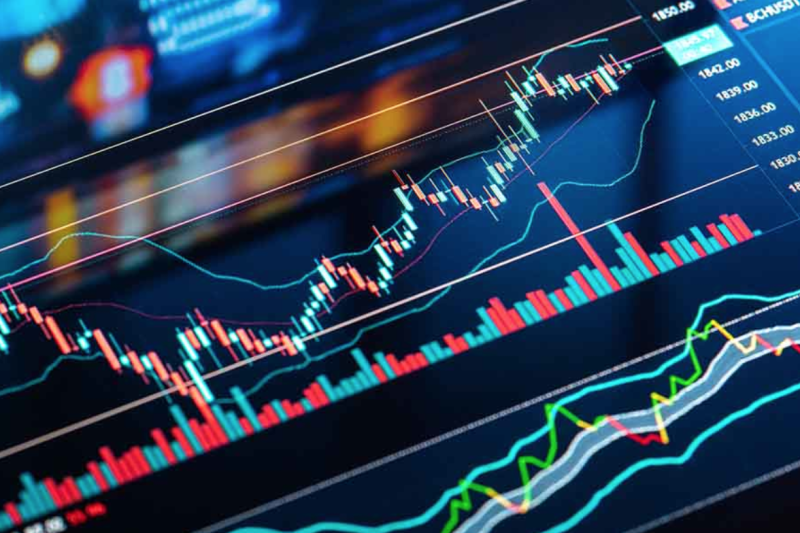by Liz Ann Sonders, Jeffey Kleintop, Kathy Jones, and Kevin Gordon, Randy Frederick, Charles Schwab & Company Ltd.
Inflation continues to run hot, raising the prospect that the Federal Reserve will tighten monetary policy more sharply than expected—possibly tipping the U.S. economy into recession.
U.S. stocks and economy: Hits keep coming
That said, food and energy aren't solely to blame for inflation. At this point, prices are up across many categories. Alternative measures that attempt to deliver a less "noisy" read on inflation (by screening out volatile categories or focusing on the median) are also rising at their fastest rates on record. The Dallas Fed excludes the most extreme price changes in consumer goods and services each month, while the Cleveland Fed excludes all price changes except for the one in the center of the distribution of price changes. These measures' acceleration suggests that taming inflation in food and energy alone won't solve the problem.
Inflation heat intensifies

Source: Charles Schwab, Bloomberg.
CPI, Core CPI, Dallas Fed Trimmed Mean One Year PCE, which excludes the most extreme price changes in consumer goods and services, as of 5/31/2022, and Cleveland Fed Median CPI, which excludes all price changes except for the one in the center of the distribution of price changes, as of 4/30/2022.
Losing energy and gains

Source: Charles Schwab, Bloomberg.
Energy spending as of 4/30/2022. S&P 500 annual change as of 6/13/2022. Past performance is no guarantee of future results.
Energy has been an outlier

Source: Charles Schwab, Bloomberg, as of 6/13/2022.
Data indexed to 100 at 1/3/2022. An index number is a figure reflecting price or quantity compared with a base value. The base value always has an index number of 100. The index number is then expressed as 100 times the ratio to the base value. Past performance is no guarantee of future results.
Fixed income: The tide of liquidity keeps rolling out
The May CPI report squashed hopes that inflation would be coming down soon. The problem for the Fed and other major central banks is that a lot of the inflationary pressure stems from supply-side issues, which they can't control. The only option available is to slow economic growth enough to bring domestic demand down to meet the constrained supply.
Markets are pricing in a steep rise in the target for the federal funds rate to the 3.75%–4% region by the middle of 2023. That represents a huge leap from expectations of 2% in early March and, if realized, would be the highest fed funds rate since 2008. When combined with the Fed's quantitative tightening program, policy would be well into restrictive territory.
The forward rate indicates short-term rates will hit 3.6% in 2023

Source: Bloomberg. USD OIS FWD swap 18M3M (G0025 18M3M BLC2 Currency). Daily data as of 6/13/2022.
Note: A vanilla interest rate swap is an agreement between two counterparties to exchange cashflows (fixed vs floating) in the same currency.
Yield curve inverts on expectations for tighter Fed policy

Source: Bloomberg. Daily data as of 6/13/2022.
Note: The rates are composed of Market Matrix U.S. Generic spread rates (USYC2Y10). This spread is a calculated Bloomberg yield spread that replicates selling the current 2-year U.S. Treasury Note and buying the current 10-year U.S. Treasury Note, then factoring the differences by 100.
Bloomberg Financial Conditions Index shows tightening conditions

Source: Bloomberg. Bloomberg U.S. Financial Conditions Index (BFCIUS Index), daily data as of 6/13/2022.
The Bloomberg U.S. Financial Conditions Index tracks the overall level of financial stress in the U.S. money, bond, and equity markets to help assess the availability and cost of credit. A positive value indicates accommodative financial conditions, while a negative value indicates tighter financial conditions relative to pre-crisis norms. Y-axis is truncated at -2.0 for scaling purposes. For reference, the low occurred on 3/24/2020 and was -6.33. The Z-Score indicates the number of standard deviations by which current financial conditions deviate from the average. A positive value indicates accommodative financial conditions, while a negative value indicates tighter financial conditions
While it has been a brutal year for fixed income investors to date, the drop in prices and rise in yields presents potential opportunities for those looking to generate income from their portfolios. Bonds now have yields that are significantly higher than those found in dividend-paying stocks.
Yields are higher than people realize

Source: Bloomberg, as of 6/10/2022.
Indexes represented are: Bloomberg U.S. Aggregate Bond Index (U.S. Aggregate), Bloomberg U.S. Corporate Bond Index (IG Corporates), Bloomberg U.S. Corporate High-Yield Bond Index (HY Corporates), Bloomberg U.S. Municipal Bond Index (Municipal Bonds), ICE BofA Fixed Rate Preferred Securities Index (Preferreds), Bloomberg Emerging Market USD Aggregate Index (EM USD Bonds), Bloomberg U.S. MBS Index (MBS), Bloomberg U.S. Treasury Index (Treasuries), and the S&P 500 Dividend Aristocrats Index (Dividend Aristocrats). Yields shown are the average yield-to-worst except for the Dividend Aristocrats which is the average dividend yield. Past performance is no guarantee of future results.
Global stocks and economy: ECB is prepared for liftoff
For the second half of this year, the market seems to have priced in a series of hikes for the ECB, in line with the Fed's expected course. That could offer some support to the euro versus the U.S. dollar.
ECB policy rates set to begin to track Fed's path

Source: Charles Schwab, Macrobond, Federal Reserve, European Central Bank, Bank of Japan, Bloomberg data as of 6/13/2022.
ECB net asset purchases and Eurozone bond yields

Source: Charles Schwab, Macrobond data as of 6/9/2022.
The euro 10-year bond yield is the GDP-weighted 10-year bond yield of Eurozone member countries.
The ECB fought a hard battle to reduce spreads after the European debt crisis of 2010-2012, when rates were hiked and the yield spreads of some countries were as wide as, or wider than, pre-euro zone levels. At its June meeting, ECB President Christine Lagarde emphasized the bank's commitment to preventing fragmentation. Yet, Italy's 10-year government bond yield rose sharply after the meeting, crossing over 4% on June 13, up from around 1% at the start of the year. The Italian yield is now at the widest spread to Germany's 10-year yield (2.4%) since the pandemic-fueled recession in the second quarter of 2020, as you can see in the chart below.
Eurozone spreads widening

Source: Charles Schwab, Macrobond data as of 6/13/2022.















